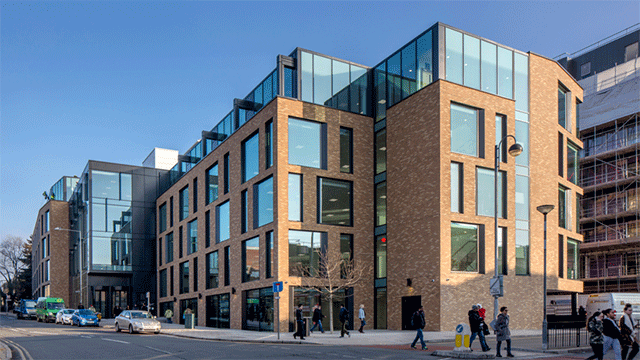Pick up any auction catalogue and you will find a short lease property being sold. Although views differ according to what constitutes a short lease, the most widely accepted definition is anything with less than 80 years.
The reason being is that a lease with fewer than 80 years incurs what is known as a “marriage fee”, a premium that must to be paid to the freeholder in return for extending a lease.
So why do you want to extend a lease? Simply put, to gain the legal right to own the property. When you buy a leasehold property, you own the building but not the land it stands on. The land is owned by the landlord, the “Freeholder”, and you are the “Leaseholder”.
Most leases are granted for 99 years, and once the lease runs out, ownership of the property reverts back to the freeholder. This means when a lease gets shorter, the freeholder is set to gain ownership of the property sooner – a valuable asset.
Another income stream for freeholders is the annual rent they charge leaseholders, known as a “ground rent”.
Understanding this set-up is key to understanding how lease extension premiums are calculated.
Properties with short leases are worth less than their longer-lease counterparts because you do not have the legal right to own the property for as long – and that means with a shorter lease it is more difficult to sell a property or to raise finance.
However, there is a solution: extend the lease. This can be done in two ways; the formal route and the informal route.
The formal route, also known as the statutory route, involves a solicitor serving a Section 42 notice on the freeholder. This notice can only be served when a property has been owned for two or more years, although a current owner who fits this criteria can assign the right to the purchaser. This gives the leaseholder the right to add 90 years to what is left on the present lease at a “peppercorn” rent, which means no ground rent.
The informal route is where the leaseholder contacts the freeholder directly to negotiate a lease extension. If this route is chosen there are no rules, the freeholder can ask whatever price they like and insert new clauses and change ground rents. It is a riskier option which should be exercised with caution – although sometimes this may be quicker, more flexible and cheaper on fees. However, it is important to bear in mind, for both routes, the leaseholder pays the freeholders’ costs – including their solicitor’s and surveyor’s fees.
When you extend a lease that has fewer than 80 years left, there is an additional fee to be paid to the freeholder called a “marriage value”, so-called because the value of the property plus a longer lease when “married together” exceed the combined value of the separate entities.
A lease extension adds value to the property and the freeholder is entitled (under the 1993 Leasehold Reform Act) to half of the increase in the value of the property.
The key to making money from buying a property with a short lease is by calculating the cost of the premium and the end value of the property with an extended lease. And this is the area where expert valuation advice is critical because freeholders and the premiums they charge can vary dramatically, says Katie Cohen, consultant solicitor at Keystone Law.
“We recently had a case where a client bought a flat at auction with 65 years left on the lease for £110,000. Unusually, but very wisely, the vendor had used us to agree the premium of £22,500 beforehand,”says Colin Horton, owner of Hortons Valuers and chairman of the Young Leasehold Professionals Association.
“The flat with an extended lease was worth £190,000 – the new client saw a profit of almost £60,000 straight away,”
Such an uplift is not unusual; Cohen has acted for a client who bought a London flat at auction with just 16 years left on the lease for £250,000.
“The premium to extend was £1.5m but the flat sold one year later by private treaty with the extended lease and netted the client over £750,000 profit.”
But capital uplift is not the only area of opportunity. Because short lease properties are cheaper to buy, they offer higher income yields, says James McHugh, auctioneer at McHugh & Co.
This means an investor can purchase a cheaper property than his neighbour with a long lease, but the rent charged is still the same, meaning an investor can reap a higher rental yield. The only drawback is the difficulty in obtaining lending on a short lease property. McHugh says they “tend to be the domain of cash buyers”.
Despite the complications of the leasehold system, there are opportunities for the savvy investor. With an estimated 4.2m leasehold dwellings in England in 2015-16 – 18% of the housing stock (DCLG: 2017) – this is an area of the market that is likely to grow. The key to success is getting the right advice.
For more on leasehold opportunities, including further advice from experts, see the next edition of EG’s Property Auction Buyers’ Guide, out on 24 November.
Samantha Collett is a freelance writer and investor.










